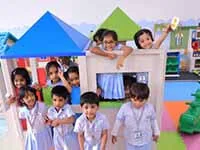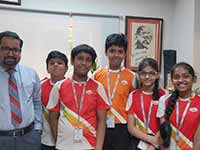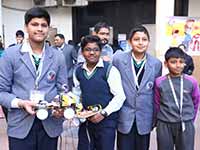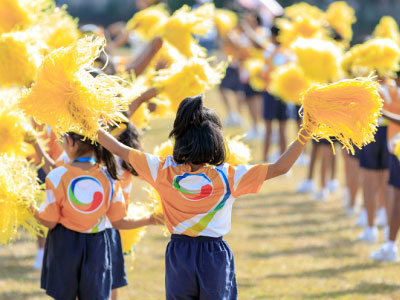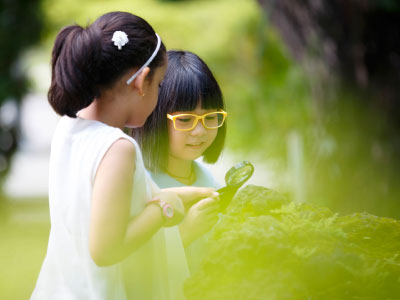A single seed can do something no screen ever can. It can make a child wait, watch, and wonder. Yes, gardening is a hands-on life lesson in patience to teach them to enjoy simple daily activities.
Even studies support gardening habits among children. Engagement in such habits is proven to improve the cognitive development of kids.
All you need is a pot with seeds and a sunny corner. The importance of gardening and how to grow plants step by step.
Let’s check out theWhy Should Kids Try Gardening?
Introducing plants and gardening to kids is one of the best things that you could do for child development. Here’s how it helps:
- Teaches Patience: Each process from planting a seed to seeing it grow involves attention and care. Such a slow and steady process helps children develop patience— something difficult to teach through lectures.
- Develops Scientific Thinking: Children will discover the way sunlight, water, air, and earth cooperate to support a plant in growing. Plus, they will grasp the basics of scientific concepts like photosynthesis.
- Healthy Food: Unfortunately, 93% of children don’t eat vegetables. Gardening can change this to a great extent. Kids are more likely to try food they helped grow.
- Fosters Emotional Development: Having children dig in the dirt might look chaotic. But it actually gets their brains sparking serotonin production, a happiness-inducing brain chemical. Frequent interaction with plants and soil decreases anxiety levels among children. Many institutions have made emotional development a criterion for playschool admission.
- Reduces Screen Time: Gardening provides an excuse to leave the house and interact with real life. And unlike games or apps, gardens provide new surprises each day to hook them.
Step-by-Step Guide: How to Grow Plants with Kids
Gather The Supplies
Just a few simple things are necessary to begin the plants and gardening process:
| Supply | Kids-Friendly Alternative |
| Shovel | Plastic spoon or a sand toy |
| Watering can | Spray bottle |
| Pots/containers | Recycled yoghurt cups, egg cartons |
| Seeds | Fast-growing picks like beans, sunflowers, or radishes. |
Try not to use garden soil straight out of the ground. It may be too dense for recycled cups and can harbour pests.
Pick the Right Spot
A big backyard is not required to start as many think. You could pick anywhere as the gardening space— be it a balcony, windowsill, terrace, or a corner of your garden. Just make sure that the space gets adequate sunshine.
Most plants, like sunflowers and tomatoes, need 5-6 hours of sunlight per day. In case you can’t find such a well-lit outdoor place anywhere, you can go for options like mint or spinach that can live in partial shade.
Select the Right Plant
It’s always better to go for easy options with fast results. That keeps kids excited. You can consider sunflower, beans, peas, tomatoes, mint, etc.
Look for organic or non-GMO seeds to keep things safe and chemical-free.
Prepare The Container
One of the most important steps of planting a seed is to fill the container with potting soil. It is better to leave an inch at the top. Many Noida preschool teachers demonstrate to children how to loosen the soil with a stick or fingers. That makes roots grow better. If you are using a garden bed, till the soil is at least 6 inches deep.
A study has found that the application of food waste to soil increased the germination percentage. You can make use of them for the better growth of the saplings.
Planting the Seed
Finally, the fun part comes— planting. Here, you need to:
- Create a tiny hole that’s about 1–2 inches deep. The depth depends on the instructions on the seed packet.
- Insert 1–2 seeds.
- Gently cover with soil and press lightly.
- Water gently until the soil is moist, not wet.
Several best international schools in Noida initiate this step as a group activity to let kids learn by experience and observation at the same time.
Watering Correctly
Watering is where most children tend to overdo or just forget! Make it a daily habit among your kids. You can let them use a spray bottle for little pots so as not to flood. If possible, make sure that the child does the watering process in the morning itself to prevent evaporation. Always test whether the topsoil is dry before watering again.
Too much water will rot the seed, and too little will prevent growth. Encourage your child to notice changes daily and make watering a conscious practice.
Watch and Wait
Let your child monitor plants and gardening progress with a garden journal. You can encourage them to:
- Take height measurements weekly and record changes in leaves.
- Take photos for comparison and sharing.
Gardening takes patience by its very nature. And when it comes to the Montessori preschool curriculum, observation and nurturing are two cornerstones. Luckily, plants and gardening encourage both nicely.
Harvest and Celebrate
When the herbs are ready, let your child harvest and use them. If it’s mint leaves, add them to their lemonades. Or, if it’s a vegetable or fruit like a tomato, include it in their sandwiches.
It’s important that children associate effort with the outcome. That establishes confidence and pride to continue with their efforts.
Fun Ideas to Keep Kids Engaged in Gardening
Gardening is fun to start. But how do you encourage kids to stay interested once the seeds are in the ground? Well, it’s all about making gardening fun and creative rather than a chore. Here are some clever ways to keep the child hooked with the several steps of planting a seed:
- Engage kids to make their own gardening area feel special with a coat of paint. You can also allow them to paint their names or draw designs on their pots for personalisation. That makes the plant belong to them.
- Offer children a journal book to let them sketch or write about what they observe every day.
- Similarly, encourage the use of wall charts to monitor the progress of the plants. You can reward children with mini rewards when plants reach milestones such as the first leaf, first flower, etc.
- You can combine plants and gardening with science. For instance, place white flowers (such as daisies) in water with food colouring and observe the petals change colour within a few hours. Such hands-on experiments demonstrate how to grow plants step by step in a more memorable manner.
- Occasionally, children lose enthusiasm if they don’t get instant results. So, broaden gardening into nature time. You must allow them to watch butterflies in the garden, create leaf art, and so on.
- Encourage children to give names to their plants and greet them daily. That’s a proven way to improve emotional intelligence.
Conclusion
Plants and gardening may seem like just a straightforward act of putting a seed in the ground, but to a child, it’s a whole lot more. It’s where they first learn to be patient and to take care of something beyond themselves.
At Global Indian International School (GIIS) Noida, we are committed to this type of practical learning. That’s why we allow children to experience it with many hands-on activities and a supportive environment. Let their first science lesson be in the soil!














